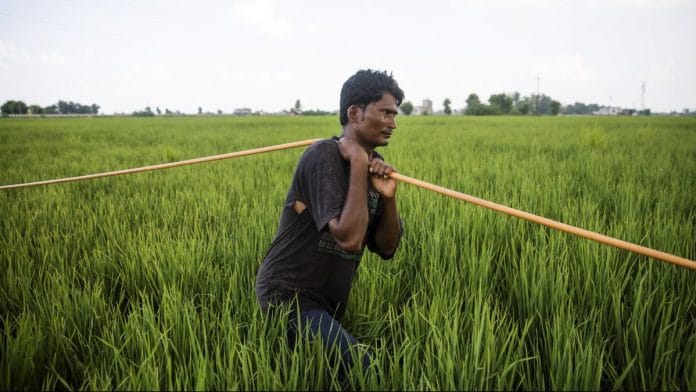‘Recent NSO Surveys show that over 50% of agricultural households are indebted. Over the past five years, farm debts have increased by 58%, forcing hundreds of farmers to give up their lives’
More than 3,000 farmers, especially the ones with small landholdings, died by suicide in states such as Punjab, Andhra Pradesh and Maharashtra. Despite India being an agrarian economy with around 70 per cent of our population engaged in agriculture and related sectors, the conditions and the living quality of the majority of our farmers are far below satisfactory. As per the 2019 report released by the National Crime Report Bureau (NCRB ), approximately 10,000 people engaged in the agriculture sector ended their lives accounting for 7 per cent of the suicides reported in India. These are only the official figures and many academicians and activists believe that the real figures are much higher.
There can be innumerable reasons that force farmers to take this extreme step, but I will primarily discuss one of the most important factors – rural indebtedness due to various government policies.
Also read: Most Indian farmers faced erosion of their real incomes since 2012-13 but survey can’t tell
Looking at the causes
Between 1947 and 1960s, India’s food production was so low that it often led to recurrent famines. India had to depend on imports from the US. But, in the 1960s, MS Swaminathan initiated the Green Revolution with a vision to make India self-sufficient in terms of production of food supplies. Use of High Yielding Variety (HYV) of seeds was popularised. It helped establish India as one leading producer of agricultural (food crops) produce. But on the other hand, HYV seeds required costly inputs such as chemical fertilisers, pesticides, increased irrigation levels, which soon started to become an economic burden for small and marginal farmers.
As many of them are uneducated and afraid of heavy paperwork, they approach various non-institutional sources like local moneylenders, traders, relatives who charge them exorbitantly high rates. As an example, in Punjab, these local moneylenders are known as “Arhatiyas” and they have huge respect and power in rural agro-based economies due to their political connections.
As mentioned earlier, the HYV seeds require huge chemical inputs which completely destroy the micronutrients in the soil and leave the soil infertile. Moreover, the crops grown using HYV seeds are highly prone to attack by pests and various other diseases. India is a country where most of our cropping practice is dependent upon monsoon, but excess water requirements push the farmers to find secondary sources of irrigation. These include installing costly tube wells or hand pumps, which further adds to the economic burden. The culmination of all these often makes the farmer vulnerable to a crop failure, which can eventually push them into a vicious cycle of debt.
Failure and non-availability of many loan-waiver schemes is currently one of the most critical issues that haunt the agrarian sector. While various formal public institutions provided loans to MNCs, no such help was extended to farmers fearing bankruptcy of the banks that would provide the loans to farmers. Because of the LPG reforms post-1991, Indian farmers now had to compete with farm produce from Western nations, which were highly subsidised and of better quality than the Indian ones. Shortage of cash during the 2016 demonetisation has resulted in farmers selling their products for lower prices due to a collapse in demand in wholesale markets. Agitated farmers in many states came on the streets and chanted slogans like “Kisaan ki loot” against the Narendra Modi government.
Also read: The story of Ramrao, a Vidarbha farmer who drank pesticide and lived
Way forward
Our honourable Prime Minister Narendra Modi has promised to double farmers’ income by 2022. I feel this really is a herculean task because farmers’ incomes are continuously declining since 2011-12. In a country where the majority depend on agriculture, its share of GDP has risen to 20 per cent in the past 17 years, which is definitely a very good sign. Emergence of various microfinance services had led to financial exclusion in rural areas by expanding the availability of rural credit. Various government and non-government bodies are trying to spread awareness regarding cheaper farming techniques, credit sources, with the help of documentaries, radio shows, television shows, print media, including newspapers and magazines. But I wonder in a country where a farmer doesn’t have money to feed their family, how would they be able to get money for radio, TV, internet access?
A lot has to be done by the government through its policies and plans that could help in improving the conditions of Indian farmers and provide an adequate income enabling them to live a debt-free and comfortable life.
Ritam Basu is a student at School of Planning and Architecture. Views are personal.







